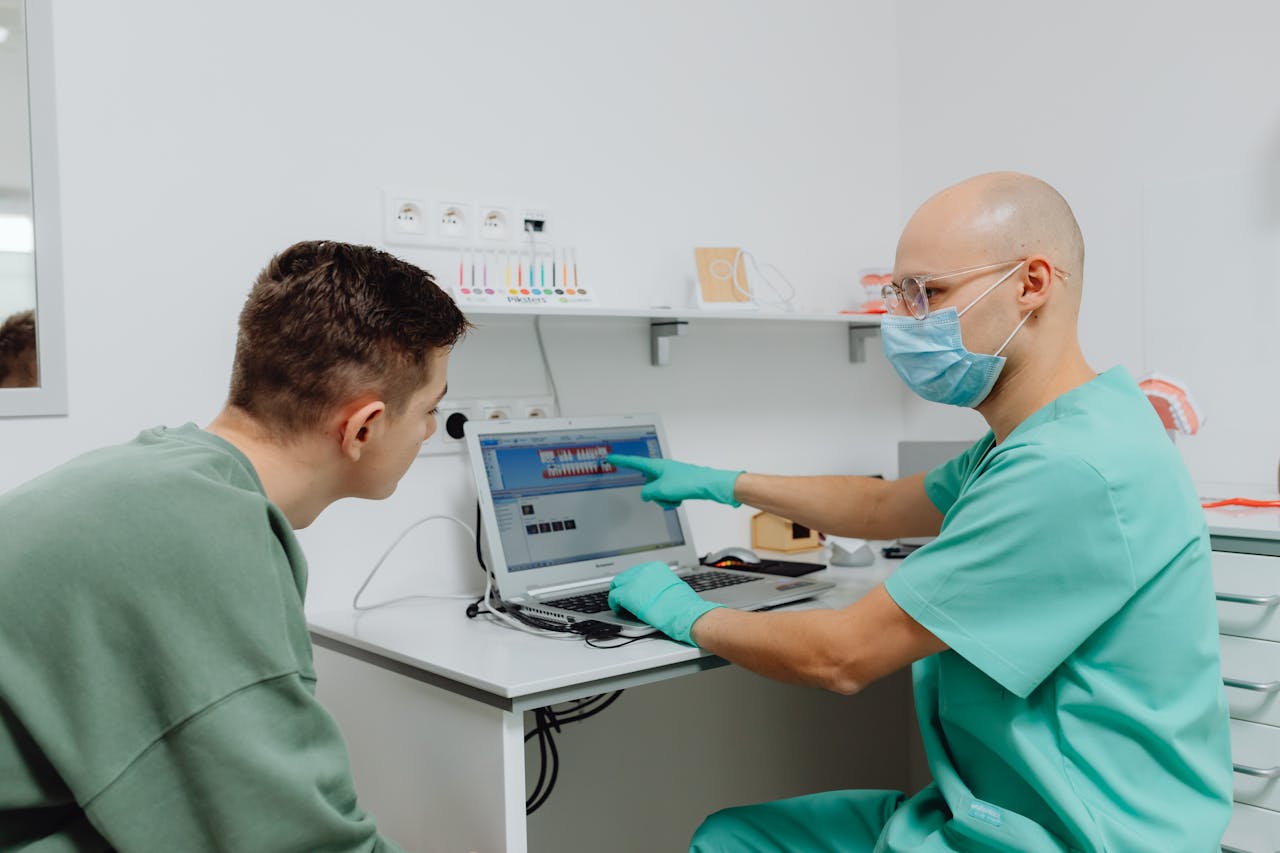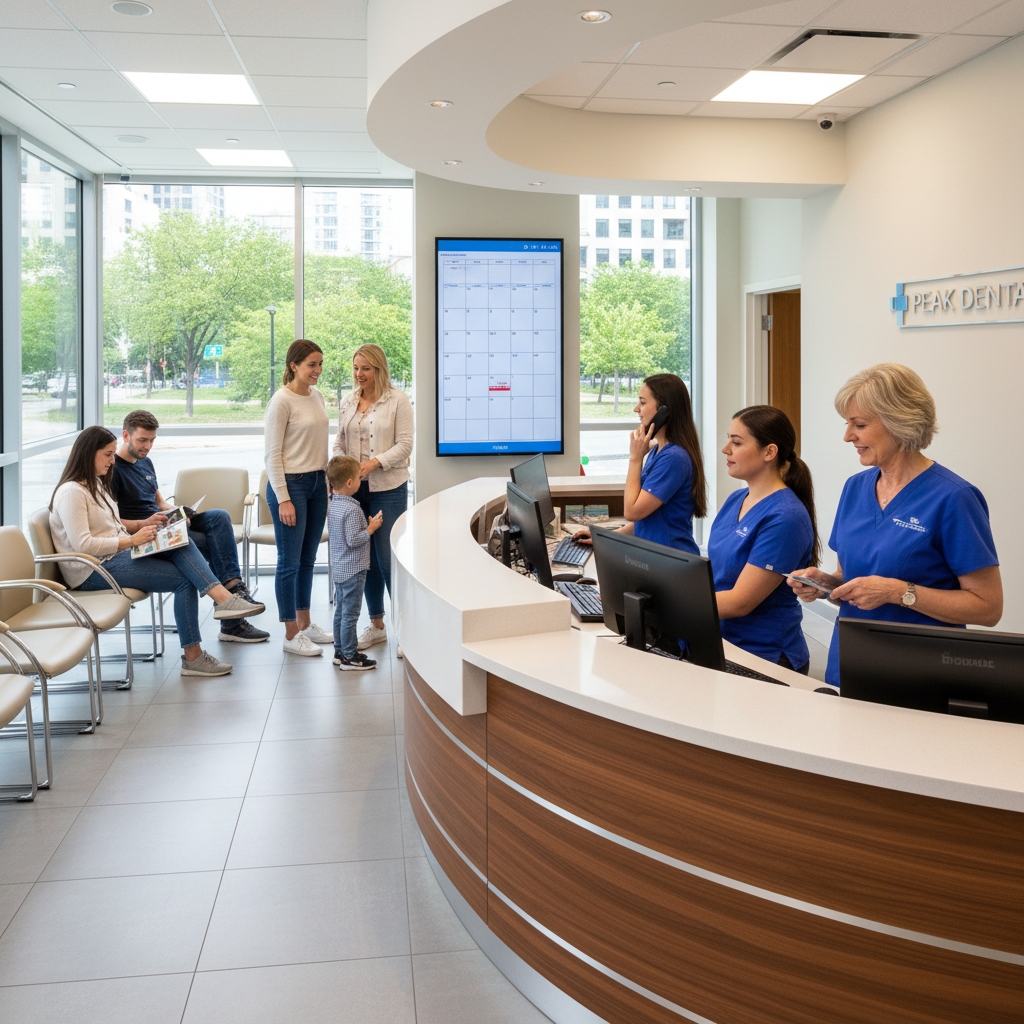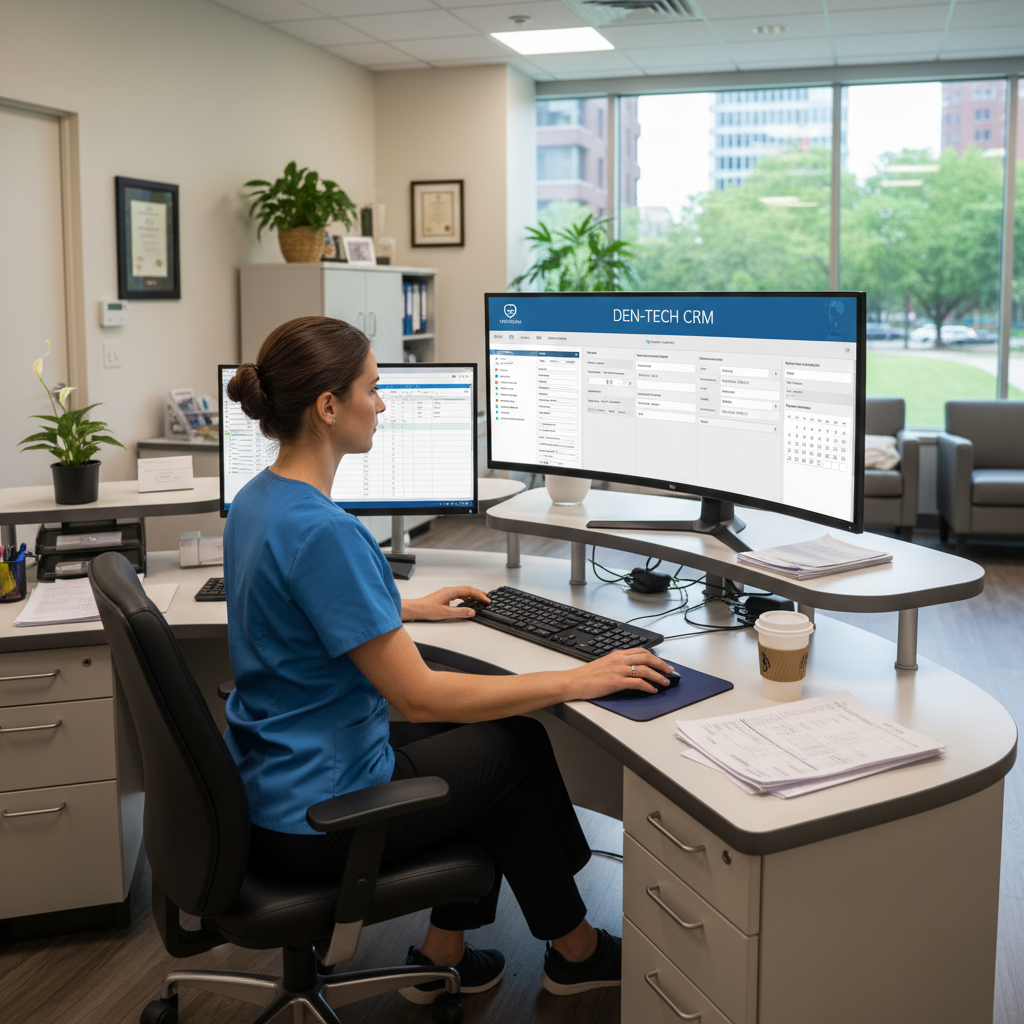












Blog Article


How to Boost Dental Practice Revenue by Recovering Lost Patient Opportunities - Guide For Dentists and DSOs
Many dental practices lose thousands of dollars each month without realizing it. The average dental practice misses 20-30% of potential patient opportunities through unanswered calls, failed appointment bookings, and poor follow-up systems. These missed opportunities directly impact revenue growth and long-term practice sustainability.
Patient retention gaps and operational inefficiencies create significant revenue leaks that compound over time. When patients can't reach the practice, appointments go unscheduled, and existing patients drift away due to poor communication. These lost connections represent real money walking out the door.
The good news is that dental practices and DSOs can recover these lost opportunities through systematic improvements to their patient communication systems. By addressing missed calls, automating key processes, and implementing data-driven solutions, practices can capture revenue that was previously slipping through the cracks and build stronger patient relationships.
Key Takeaways
- Missed calls and poor communication systems cause dental practices to lose 20-30% of potential patient revenue monthly
- Automated appointment booking and 24/7 patient support help capture opportunities that would otherwise be lost
- Data analytics and proper patient engagement systems allow practices to identify and recover revenue gaps systematically
Missed Calls Impacting Dental Practice Revenue
Phone calls represent the primary revenue gateway for most dental practices, yet 32% of calls to dental offices go unanswered during business hours. This disconnect between patient demand and practice availability creates substantial financial losses that compound over time.
Missed Calls and Lost Production
Every unanswered call represents immediate production loss for dental practices. When potential patients cannot reach the office, they typically move to the next provider rather than calling back.
Direct Revenue Impact:
- New patient calls generate the highest revenue potential
- Emergency calls often convert to same-day appointments
- Treatment follow-up calls secure additional procedures
The math becomes stark when calculated annually. A practice missing 120 new patient calls yearly faces potential losses of $960,000 in revenue, assuming an $8,000 patient lifetime value.
Peak call times coincide with lunch breaks and end-of-day rushes. Staff shortages during these periods amplify the problem. Practices without dedicated phone coverage lose the most opportunities during high-demand windows.
Appointment confirmations represent another critical loss area. Unconfirmed patients show higher no-show rates, creating schedule gaps that reduce daily production targets.
Financial Risks for DSOs
DSOs face multiplied financial exposure across their practice networks. When individual locations miss calls, the cumulative revenue impact scales dramatically across the organization.
Portfolio-Wide Losses:
- 50-location DSO missing 10% of calls loses millions annually
- Brand reputation suffers from inconsistent phone coverage
- Acquisition ROI diminishes with poor patient capture rates
Multi-location organizations struggle with standardizing phone protocols. Each practice location operates with different staffing levels and call volumes. This inconsistency creates weak points in the patient acquisition funnel.
DSOs investing in patient retention strategies see better returns when combined with comprehensive call management. The synergy between capturing new patients and retaining existing ones amplifies overall revenue growth.
Tracking call metrics across locations becomes essential for DSO performance management. Practices with higher answer rates consistently outperform locations with poor phone coverage in revenue per patient metrics.
Patient Retention Challenges
Missed calls damage existing patient relationships beyond new patient acquisition losses. Current patients calling for appointments, insurance questions, or urgent concerns expect immediate response from their established provider.
Retention Impact Factors:
- Trust erosion when patients cannot reach their dental team
- Competitor switching increases with poor communication
- Treatment plan abandonment rises without follow-up contact
Patients who experience missed calls rate their practice satisfaction lower. This dissatisfaction spreads through online reviews and word-of-mouth recommendations, creating long-term reputation damage.
Emergency calls present the highest retention risk. Patients experiencing dental pain who cannot reach their regular provider will seek immediate care elsewhere. Many never return to the original practice after receiving emergency treatment from a competitor.
Follow-up calls for treatment acceptance also suffer from missed connections. Patients considering expensive procedures need reassurance and question clarification. When these calls go unanswered, treatment acceptance rates decline significantly, reducing case values and patient lifetime revenue.
Strategies to Recover Lost Patient Opportunities
Dental practices lose significant revenue when patients skip appointments, delay treatments, or disappear from the schedule entirely. The most effective recovery strategies focus on immediate patient contact, systematic no-show prevention, and structured follow-up protocols that bring patients back to active treatment.
Immediate Patient Engagement Tactics
Quick response times make the biggest difference when patients cancel or miss appointments. Practices should contact patients within 24 hours of a missed appointment to reschedule.
Same-day outreach works best for patient recovery. Staff should call patients who cancel appointments to offer same-day or next-day alternatives. This prevents patients from falling off the schedule completely.
Text messaging gets better response rates than phone calls. Send appointment reminders 24 hours and 2 hours before scheduled visits. Include the practice name, appointment time, and easy rescheduling options.
Last-minute availability lists help fill cancelled slots quickly. Keep a list of patients who can come in on short notice. Call these patients when cancellations happen to maintain full schedules.
Digital scheduling tools let patients book their own appointments online. This reduces phone tag and makes rescheduling easier for busy patients. Patient retention strategies show that convenient scheduling options keep more patients active.
Reducing No-Shows Effectively
No-show rates above 10% indicate serious scheduling problems that need immediate attention. The average dental practice loses $200-300 per missed appointment when factoring in lost time and overhead costs.
Confirmation systems should include multiple touchpoints. Call patients 2-3 days before appointments, then send text reminders 24 hours and 2 hours prior. Ask patients to confirm their attendance.
Scheduling policies need clear consequences for no-shows. Charge a reasonable no-show fee after the first missed appointment. This policy must be explained during appointment booking and included in patient paperwork.
Morning and early afternoon appointments have lower no-show rates than late afternoon slots. Schedule important treatments and new patients during these higher-attendance time blocks.
Same-day confirmations catch scheduling conflicts early. Have staff call patients on the morning of their appointments to confirm attendance and address any last-minute concerns.
Improving Follow-Ups in Dental Clinics
Systematic follow-up protocols prevent patients from delaying recommended treatments. Practices lose thousands of dollars annually when patients don't return for planned procedures.
Treatment acceptance rates improve with proper follow-up timing. Contact patients within 48-72 hours after presenting treatment plans. This window catches patients while the information is still fresh.
Create specific follow-up schedules for different treatment types. Preventive care needs 6-month reminders, while urgent treatments require weekly contact until scheduled. Track these timelines in patient management software.
Reactivation campaigns target patients who haven't visited in 12-18 months. Send personalized letters or emails highlighting new services and asking about their dental health needs. Revenue optimization strategies show that reactivation campaigns recover 15-25% of dormant patients.
Dental hygienists can make follow-up calls for periodontal maintenance and preventive care. Clinical staff often get better responses than administrative team members when discussing health-related appointments.
Track follow-up success rates by staff member and treatment type. This data helps identify which approaches work best for different patient situations and allows practices to refine their recovery systems.
Implementing 24×7 Virtual Receptionist for Dentists
A 24/7 virtual dental receptionist captures missed revenue opportunities by answering every patient call, scheduling appointments automatically, and reducing no-shows through consistent follow-up. These systems cost $199 monthly while preventing the loss of $3,000-$5,000 per missed call.
Handling After-Hours Patient Inquiries
Dental emergencies and appointment requests don't follow business hours. 88% of patients who reach voicemail won't call back, making after-hours coverage critical for revenue retention.
Virtual receptionists handle common after-hours scenarios:
- Emergency triaging: Routes urgent calls to on-call dentists while scheduling non-emergency cases
- Appointment scheduling: Books consultations and procedures when patients are most likely to call
- Insurance verification: Collects patient information for next-day processing
The system operates continuously without breaks or sick days. Patients receive immediate responses instead of waiting until morning, preventing them from calling competitors.
After-hours booking capability alone can increase new patient acquisition by 42%. The AI follows customized scripts that match the practice's tone and policies.
Managing High-Volume Call Periods
Peak calling times overwhelm traditional front desk staff, causing missed appointments and frustrated patients. 43% of new patient calls go unanswered during busy periods in dental offices.
Virtual receptionists eliminate call volume bottlenecks:
Challenge Solution
Multiple simultaneous calls Unlimited concurrent call handling
Hold time complaints Instant call pickup and routing
Staff multitasking errors Dedicated call management focus
The system handles routine inquiries while staff focuses on in-person patient care. Complex requests get transferred to human staff with complete call context and patient information.
During lunch hours and end-of-day rushes, the virtual receptionist maintains service quality without additional staffing costs.
Ensuring Consistent Patient Experience
Patient satisfaction depends on reliable, professional interactions across all touchpoints. Virtual receptionists deliver standardized service that human staff cannot always maintain during stressful periods.
Key consistency benefits:
- Same greeting and information collection every time
- No mood variations or training gaps
- Identical appointment confirmation and reminder processes
- Uniform insurance verification procedures
The AI-powered system sounds natural and professional. Most patients don't realize they're speaking with a virtual assistant rather than human staff.
HIPAA compliance ensures patient data security during all interactions. The system integrates with existing practice management software to maintain unified patient records and scheduling.
No-show rates decrease by 30% through automated appointment reminders and confirmation calls. This consistency translates directly to increased revenue through better appointment adherence.
Automating Appointment Booking for Dental Practices
Modern appointment booking systems eliminate scheduling bottlenecks while capturing revenue from patients who would otherwise call during off-hours. Automated appointment scheduling reduces administrative burden and increases booking conversions through 24/7 availability.
Direct Scheduling Into PMS
Automated booking systems integrate directly with practice management software to eliminate double data entry and reduce scheduling errors. Staff no longer need to manually transfer appointment information between systems.
Real-time availability ensures patients only see open time slots. The system automatically blocks conflicting appointments and updates calendars instantly.
Patient information flows seamlessly from the booking interface into existing patient records. Insurance details, contact preferences, and appointment history remain accessible to staff.
Multiple appointment types can be configured with specific time requirements. Routine cleanings, consultations, and procedures each have designated durations and provider assignments.
Integration capabilities vary by PMS vendor. Most modern systems offer API connections that sync appointment data within minutes of patient booking.
Context-Aware Communication
Smart booking platforms analyze patient history and preferences to personalize the scheduling experience. The system remembers preferred appointment times, provider preferences, and communication methods.
Appointment reminders automatically adjust based on patient behavior patterns. Frequent no-shows receive additional confirmations while reliable patients get standard notifications.
Treatment sequences are managed automatically. Patients requiring multiple visits see only appropriate follow-up appointments based on their current treatment plan.
Emergency scheduling routes urgent cases differently than routine appointments. Dental practices can prescreen emergency patient symptoms before patients arrive at the office.
Insurance verification happens during the booking process. Patients receive benefit information and cost estimates before confirming their appointments.
Minimizing Manual Staff Tasks
Automated systems handle routine scheduling tasks that previously required staff intervention. Phone calls for basic appointment changes decrease significantly once patients adopt online booking.
Waitlist management fills cancellations automatically. When appointments become available, the system contacts waitlisted patients in priority order.
Staff time shifts from answering scheduling calls to higher-value patient care activities. Reception teams can focus on complex cases and in-person patient needs.
Reporting features track booking patterns and identify peak demand periods. Practice managers can adjust staffing levels based on automated scheduling data.
Automated payment collection during booking reduces billing workload. Patients can pay deposits or full amounts when scheduling their appointments.
Using Analytics to Increase Dental Practice Revenue
Modern dental practices lose thousands of dollars monthly from missed opportunities that go untracked. Analytics tools reveal exactly where revenue slips away and provide actionable data to recover these losses through targeted staff improvements and systematic follow-up processes.
Missed-Call Heatmaps for Dental Teams
Call tracking heatmaps show dental practices exactly when potential patients call but don't reach a live person. These visual tools display call volume patterns throughout the day, revealing peak times when staff miss the most appointment requests.
Most dental offices lose 15-25% of potential revenue from unanswered calls during lunch breaks, shift changes, and busy treatment periods. Heatmap data pinpoints these exact time slots.
Key metrics to track:
- Call volume by hour and day
- Missed call percentages during specific times
- Caller wait times before hanging up
- Repeat calls from the same numbers
Practice managers can use this data to adjust staffing schedules and implement call coverage protocols. Some practices discover they need additional front desk support during Tuesday and Thursday morning peaks.
Strategic dental analytics platforms help identify these patterns and convert missed opportunities into scheduled appointments.
Revenue Attribution in Dental Clinics
Revenue attribution tracking connects each dollar earned back to its original source, whether from referrals, marketing campaigns, or patient retention efforts. This data shows which activities generate the highest return on investment.
Dental practices often spend marketing budgets without knowing which channels bring profitable patients. Attribution analytics reveal that Google Ads might generate 200 leads monthly while only 15% schedule consultations, compared to referral programs with 80% conversion rates.
Essential attribution metrics include:
- Cost per acquired patient by channel
- Lifetime value by patient source
- Treatment acceptance rates by referral type
- Revenue per marketing dollar spent
Many practices discover their highest-value patients come from specific sources. Emergency patients might average $800 in immediate treatment, while cosmetic consultations from social media ads generate $3,500 in accepted treatment plans.
Data-driven dental practices use this information to reallocate marketing budgets toward the most profitable patient acquisition channels.
Tracking Staff Follow-Up Performance
Staff follow-up performance directly impacts treatment acceptance rates and patient retention. Analytics track how consistently team members contact patients after consultations, missed appointments, or incomplete treatments.
Proper follow-up systems increase treatment acceptance by 40-60% when patients receive timely, personalized contact within 24-48 hours of their visit.
Critical follow-up metrics:
- Contact attempt rates within 24 hours
- Treatment plan acceptance after follow-up calls
- Appointment confirmation response rates
- Patient retention by staff member
Individual staff performance varies significantly. Some team members achieve 85% treatment acceptance through consistent follow-up, while others reach only 45% without systematic contact protocols.
Practices can identify top performers and replicate their communication strategies across the entire team. Training programs based on analytics data improve overall team performance and reduce revenue loss from inadequate patient follow-up.
Custom Integrations and Multi-Location Solutions for DSOs
DSOs need specialized technology solutions that maintain consistent patient experiences while supporting unique operational requirements across multiple practice locations. Centralized management capabilities and standardized processes enable efficient scaling without compromising care quality or revenue recovery efforts.
White-Label Options for Dental Organizations
White-label solutions allow DSOs to customize patient communication platforms with their own branding and messaging. These systems maintain consistent visual identity across all patient touchpoints while delivering automated appointment reminders, follow-up communications, and reactivation campaigns.
Custom branding extends to patient portals, mobile applications, and automated messaging systems. DSOs can incorporate their logos, color schemes, and practice-specific messaging into all patient-facing communications.
White-label platforms typically offer API access for deeper customization. Practice management teams can modify workflows, communication templates, and reporting dashboards to match their specific operational needs.
The technology remains invisible to patients who see only the DSO's branding. This approach builds stronger patient relationships while maintaining the technical benefits of enterprise-level communication systems.
Seamless Multi-Location Roll-Out
Enterprise deployment strategies ensure consistent implementation across all practice locations without disrupting daily operations. DSO location permissions and multi-office patient sync capabilities allow centralized management while maintaining location-specific customization needs.
Phased rollouts typically begin with pilot locations to test workflows and identify potential challenges. Training protocols ensure staff at each location understand new systems before full deployment.
Centralized dashboards provide real-time visibility into implementation progress across all locations. DSO administrators can monitor adoption rates, track performance metrics, and identify locations requiring additional support.
Data migration processes preserve existing patient records and communication histories. Patients experience no interruption in service during the transition to new systems.
Enhancing Brand Consistency
Standardized communication protocols ensure patients receive identical service experiences regardless of location. Template libraries contain pre-approved messaging for appointment confirmations, treatment reminders, and follow-up communications.
Brand guidelines enforcement prevents location-specific variations that could confuse patients. Automated systems deliver consistent messaging timing, tone, and content across all practice locations.
Performance monitoring tools track communication effectiveness at individual locations. DSO management can identify locations with higher patient engagement rates and replicate successful strategies system-wide.
Patient data synchronization allows seamless care coordination between locations. Referral processes and treatment history sharing maintain continuity when patients visit different practice locations within the same DSO network.
AI-Native Patient Engagement Platform: Resonate
Resonate AI transforms missed calls into booked appointments with AI-powered messaging that captures over 174 new patients monthly for dental practices. The platform combines automated receptionist capabilities, smart chat booking, and performance analytics to recover revenue from lost patient opportunities.
AI Receptionist for Dental Practices
Resonate operates as a virtual receptionist that responds instantly when dental practice staff cannot answer incoming calls. The AI system recognizes missed calls within seconds and automatically sends personalized text messages to potential patients.
Key Features:
- 24/7 call monitoring - Never misses patient inquiries outside office hours
- Instant response timing - Texts callers within 30 seconds of missed calls
- Human-like messaging - Uses empathetic language that feels genuine to patients
The platform addresses a critical gap in dental practice operations. Research shows 30% of dental practice calls go unanswered, while 78% of patients book with the first practice that responds.
Dental practices using Resonate report significant improvements in patient acquisition rates. The AI receptionist maintains consistent communication quality regardless of staff availability or time of day.
Automated Chat for Appointment Booking
The chat system handles complete appointment scheduling without human intervention. Patients receive automated messages that guide them through available time slots and booking confirmation.
Booking Process:
- Initial contact - AI sends personalized greeting message
- Service inquiry - System asks about specific dental needs
- Schedule coordination - Presents available appointment times
- Confirmation - Books appointment and sends calendar reminders
The automated booking feature integrates with existing practice management systems. Patients can complete entire scheduling process through text conversations that feel natural and conversational.
AI dental marketing tools improve conversion rates by facilitating better communication with potential patients. The system works continuously to convert inquiries into confirmed appointments.
Centralized Analytics Dashboard
The dashboard provides detailed insights into call patterns, response rates, and booking conversion metrics. Practice owners can track performance data to optimize patient acquisition strategies.
Analytics Include:
- Call volume trends - Peak times and seasonal patterns
- Response effectiveness - Message types with highest conversion rates
- Revenue tracking - New patient value and ROI calculations
- Staff performance - Comparison of AI vs human response rates
Dental practices typically see 60x return on investment through improved patient capture rates. The dashboard helps identify specific areas where revenue opportunities are being lost.
Practice managers can adjust messaging strategies based on patient response data. The system continuously learns from successful interactions to improve future patient communications.
Frequently Asked Questions
These questions address common challenges dental practices face when working to recover lost revenue from inactive patients, missed appointments, and communication gaps. The answers focus on practical strategies for patient re-engagement, data utilization, and team training.
What strategies can be implemented to re-engage inactive patients in a dental practice?
Dental practices can start by creating a systematic recall program that targets patients who haven't visited in 12-18 months. This involves sending personalized letters or emails that mention their last visit and any pending treatments.
Phone calls work better than emails for re-engagement. Staff should call inactive patients directly and offer scheduling flexibility, such as evening or weekend appointments.
Practices can offer special promotions for returning patients, like discounted cleanings or free consultations. Patient retention strategies show that personalized outreach increases response rates by 40-60%.
Creating urgency helps motivate action. Staff can mention that dental problems often worsen without regular care, making future treatments more expensive.
How can dental practices effectively use patient data to identify and recapture missed opportunities?
Patient management software helps identify patterns in appointment gaps and treatment acceptance rates. Practices should run monthly reports showing patients overdue for cleanings, those who declined treatment plans, and patients with incomplete procedures.
Data analysis reveals which patients are most likely to return based on their history. Practices can prioritize outreach to patients who previously accepted treatment recommendations and maintained regular visits.
Treatment acceptance tracking shows which procedures patients declined and when. Following up on these cases after 6-12 months often results in higher acceptance rates as patients' situations change.
Insurance benefit tracking identifies patients who haven't used their annual benefits. This creates natural re-engagement opportunities before year-end.
What role does patient communication play in improving retention rates and recovering lost opportunities?
Clear communication about treatment needs and costs prevents patients from feeling surprised or confused. When patients understand why they need specific treatments, they're more likely to schedule and complete them.
Regular check-in calls between appointments help maintain relationships. These calls can address concerns, answer questions, and remind patients about upcoming needs.
Staff training in communication skills reduces patient anxiety and builds trust. Patients who feel comfortable with the team are more likely to return and accept treatment recommendations.
Educational content shared through newsletters or social media keeps the practice visible to inactive patients. This positions the practice as helpful rather than sales-focused.
Can offering flexible financing options help in boosting a dental practice's revenue from lost patient opportunities?
Payment options directly impact treatment acceptance rates. Practices that offer monthly payment plans see 30-50% higher acceptance of major treatments compared to cash-only practices.
Third-party financing companies like CareCredit allow patients to spread costs over time. This makes expensive procedures accessible to more patients who might otherwise delay treatment.
In-house payment plans work well for building patient loyalty. These arrangements show flexibility and often result in stronger patient relationships than external financing.
Multiple payment methods including credit cards, online payments, and automatic withdrawals make it easier for patients to pay. Flexible payment options reduce financial barriers that cause patients to avoid necessary care.
How important is it to train the dental team in customer service to maximize patient re-attendance?
Front desk training significantly impacts patient retention since these staff members handle most patient interactions. Poor phone skills or scheduling problems often drive patients away permanently.
Clinical staff need communication training to explain procedures clearly and address patient concerns. Patients who feel rushed or unheard are less likely to return or follow treatment recommendations.
Regular role-playing exercises help staff practice difficult conversations, such as discussing treatment costs or handling complaints. This preparation leads to more confident and effective patient interactions.
Customer service metrics should be tracked monthly, including patient satisfaction scores and complaint resolution times. Teams that monitor these metrics consistently improve retention rates.
What are the best practices for using dental appointment reminder systems to decrease no-shows and cancellations?
Automated reminder systems should send multiple touchpoints: initial confirmation, 48-hour reminder, and day-of reminder. This sequence reduces no-shows by 25-35% compared to single reminders.
Text messages work better than phone calls for younger patients, while older patients often prefer phone reminders. Practices should offer both options and track patient preferences.
Reminder content should include appointment details, preparation instructions, and cancellation policies. Clear information reduces confusion and last-minute cancellations.
Two-way messaging allows patients to confirm, reschedule, or cancel through text responses. This convenience improves patient satisfaction and helps fill cancelled slots more quickly.
Similar Articles
Ready to Get Started
Have Questions?
We're Here to Help
Connect with our team for personalized guidance
No setup fees, cancel anytime.
.avif)


.svg)
.svg)





